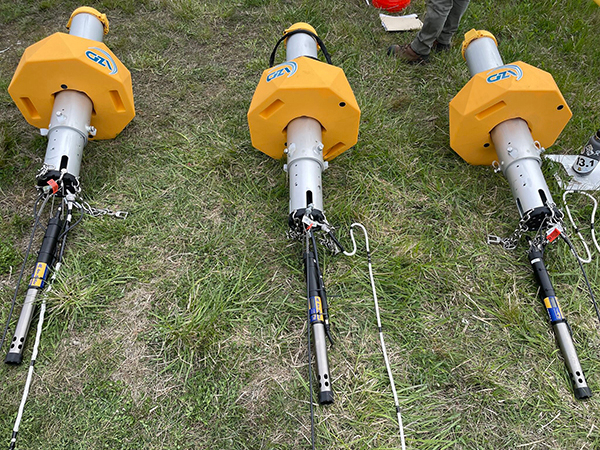Turbidity Monitoring Protects Fish Spawning Season
Published on by Marcus Miller, Digital Marketing Manager at In-Situ in Case Studies
Turbidity Monitoring Protects Fish Spawning Season
Overview
GZA’s instrumentation and monitoring group, Digital Technology Solutions (DTS), deployed an automated turbidity monitoring system for a coastal development project to ensure the protection of local fish species and to minimize disruption to schedule.
Challenge
GZA was retained to design a water quality monitoring solution to comply with strict permit requirements during the construction of a new marine bulkhead and vessel pier. The standard workflow typically involves manual data collection, which can be labor intensive, inconsistent and costly. As an alternative, GZA designed and deployed an automated system for near-real-time data collection, visualization and alerting. Key benefits of this system included establishing an accurate baseline and developing an understanding of how external factors such as weather and tidal conditions were affecting the data. This solution empowered the Project Team to make fast, data-driven, informed decisions which ensured both the protection of local fish species and limited disruption to the coastal development project.
Local permits required seasonal turbidity monitoring for construction activities that were likely to disturb the existing marine sediment. For this project, that included pile driving and drilled shaft installation. Monitoring was to be performed outside the turbidity curtains to ensure threshold levels were not exceeded during the critical fish spawning season. Frequent measurements were required just below the water surface, just above the mudline and at the midpoint of the water column. Given these requirements and the challenges of operating in a saltwater and tidal environment, a carefully designed system and deployment plan were critical.
Solution
GZA evaluated several technologies and ultimately selected In-Situ’s Rugged Buoy and Aqua TROLL 600 Multiparameter Sondes equipped with turbidity sensors. A total of three systems were deployed and each system was custom configured based on measured water depths and tidal conditions. Anchorage was provided using a series of moorings.
The Aqua TROLLs collected turbidity measurements at 10-minute intervals. Each Rugged Buoy contained a VuLink telemetry device that transmitted data to In-Situ’s HydroVu software every four hours. In the event an exceedance was detected, a real-time alert would be distributed. This kept the Project Team informed and allowed them to continue work without any unnecessary disruption.
“We selected the Aqua TROLL 600 because of the harsh conditions that an ocean environment presents,” stated a member of GZA’s management team. “We had other options, but we weren’t confident enough that they could endure the corrosive marine environment. Nor were they as cost effective.”
“Deployment methodologies were critical,” a member of GZA’s field deployment team added. “The team collaborated to solve many challenges posed by saltwater marine environments including weather, tides, current and wave action. Durability, reliability and functionality of this technology were all key factors to success.”
Results
The Rugged Buoy and VuLink telemetry simplified the...
READ MORE
Taxonomy
- Aquaculture
- Aquaculture Systems
- Water Monitoring
- Coastal
- Water Monitoring
- Water Systems Monitoring
- Water Quality Monitoring
- Water Quality Monitoring
- Water Quality Monitoring Sensor
- Turbidity
